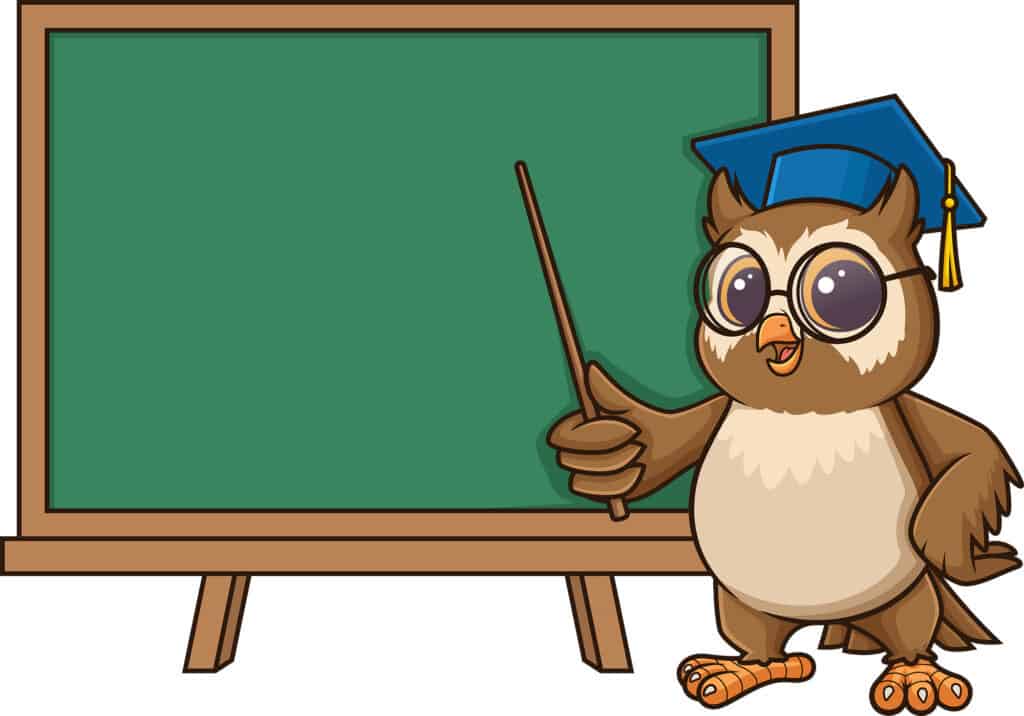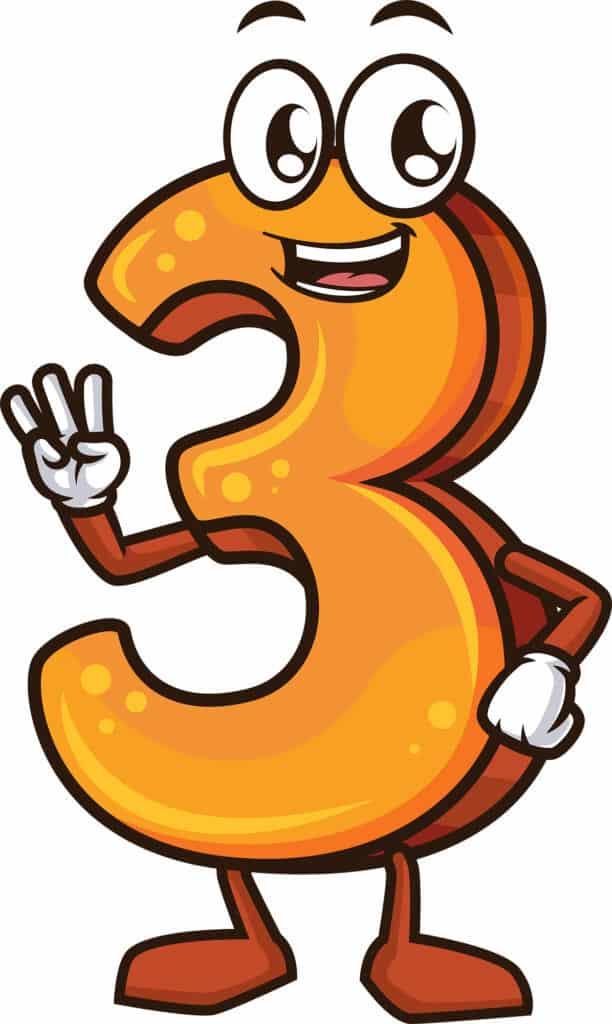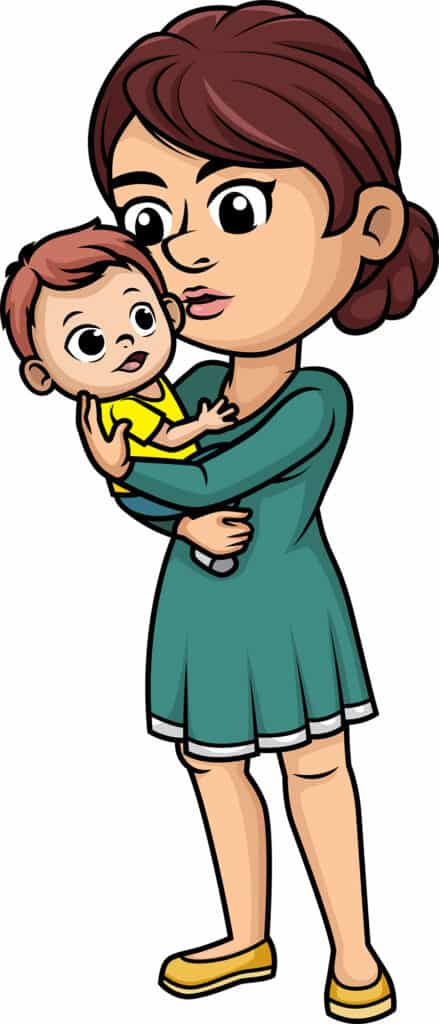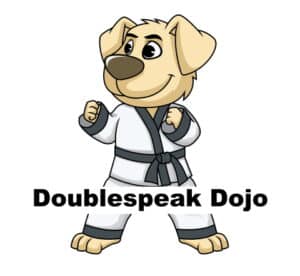
How exactly do we learn a language? This is a question humans have been asking for over 2000 years, and there have been many different language learning theories and explanations offered over the course of that time.
Throughout history, seven major theories have offered explanations as to how we learn a language. From these seven ideas, three current theories emerged to explain what’s called language acquisition. However, we are still a long way from one theory that fully explains how humans learn a language.
What do these different theories say about how we learn a language? Why is it so hard to explain how humans learn language? Which of the three current theories seems most likely? For the answer to all these questions and more, keep reading to find out what I’ve learned on my journey as an ESL teacher!
Contents
- 1 What is Language Learning Theory?
- 2 Why Is There No Agreed Upon Language Learning Theory?
- 3 The History of Language Acquisition Theory: 7 Big Ideas
- 4 Contemporary Language Learning Theory: 3 Competing Explanations
- 5 Native versus Second Language Acquisition
- 6 Stages of Language Acquisition for a Second Language
- 7 What Does All This Mean?
- 8 The Final Talking Point on Language Learning Theory
- 9 Sources
What is Language Learning Theory?
Language learning theory is more commonly referred to as language acquisition theory. Language acquisition theory simply refers to attempts to explain how humans learn a language.
Human language is immensely complex, yet we learn it more easily the younger we are. This simple fact has caused people to wonder how we acquire language. How do children learn a skill that can take adults years of formal study? (A spin off of this article is the one I wrote about when to teach a second language…you can find it here.)
Besides satisfying curiosity, figuring out how we learn languages could prove useful. If we could understand how children acquire a language, then we may be able to develop better language learning programs for older children and adults. Unfortunately, over my training and experience as an ESL teacher, I’ve discovered that explaining language acquisition has proven far from easy!
Why Is There No Agreed Upon Language Learning Theory?
Explaining how humans learn a language has proven much more difficult than you, or any student of language learning, might expect. After all, do you remember how you learned to talk?
Even people who learn an additional language at a later age, learn in different ways. From immersion to classroom study, it is hard to pin down exactly what happens in a person’s brain that allows them to learn a language. And every person is unique!

Another obstacle to explaining how we learn languages is that there are a lot of different aspects to language learning. So many that most theories fail to offer an explanation for everything. Explaining how we learn vocabulary, grammar, pronunciation, intonation is a lot of things for which to account.
Even if a theory does offer a comprehensive explanation of language acquisition, it remains a theory due to our inability to test it.
There is no way to prove that humans learn a language in the ways specified by these theories, and so language learning theory remains a science of both fact and speculation. We know some things, but confirming everything may never happen.
The History of Language Acquisition Theory: 7 Big Ideas

Humans have been wondering how we learn a language for a long time. As our knowledge of the brain and language has expanded, theories of language acquisition have evolved as well.
To understand the contemporary theories of language acquisition, we must look at the history of this question. There are seven major language learning theories that have been offered over time, and which have led us to our current understanding of language learning.
Plato’s Innate Theory
The first theory is from the place where much of our current philosophical trends and thought originate: Ancient Greece. Plato had a lot to say about a variety of human subjects, and language acquisition was one of the things to which he turned his thinking.
Plato’s contribution to the world of language learning theory comes from the problem he identified. Plato wondered how human beings, who live for a relatively short time, could have so much knowledge.
Plato concluded that some knowledge must be innate. Humans must be born already knowing certain things since they do not live long enough to learn everything they seem to know. Language is one of the things that Plato believed was innate.
Even now there is debate as to how accurate this innate theory may be. While it is clear that we have to learn to talk, language is complex to understand. Whether we innately possess some knowledge that allows us to learn a language or have to learn absolutely everything is a question that has continued to follow language learning theory.
To read more, I recommend Plato: Complete Works, located at Amazon.
Cartesian Linguistics
The famous philosopher Descartes is viewed as the source for Cartesian Linguistics. Although Descartes himself did not spend much time focused on language learning, his overall rationalist approach to thought influenced how people viewed language learning in his time and is now dubbed Cartesian Linguistics.
Descartes did not expend much energy on thinking about language learning because he believed it to be relatively simple. Like Plato, he thought that there was something innate in the human ability to learn a language. For Descartes language was almost a symptom of the rationality of human beings. Human beings need to communicate, and thus we can learn languages.
Descartes thus believed that learning a new language was a relatively simple process. One only had to make comparisons between the new language and one’s native language in order to find similarities.
While Descartes himself did not worry much about language learning, we shall see that his general rationalist approach influenced later thinkers.
Tabula Rasa

Tabula rasa is Latin for “blank slate.” This idea, put forth by the philosopher John Locket, is the opposite of innate knowledge. According to Locke, everyone is born as a blank slate. All knowledge we possess must be gained.
If language learning is not partially innate, then this changes how we should go about acquiring language. Descartes pointed out that if knowledge is innate, we need only find similarities between what we already know and what we think.
If, however, we are blank slates then language learning requires as much external information as we can possibly get. If we are born knowing absolutely nothing, then we must gather as much data as possible with which to learn.
These first three theories focused more on where our language learning ability comes from. These next four will closely examine how language is learned.
Behaviorism
The essential idea behind behaviorism is that all behavior is a response. In the mid-1900s, B.F Skinner followed Locke’s tabula rasa idea to its extreme by saying that all human behavior is a reaction to external sources.
Skinner took this idea and applied it directly to language learning. He believed that language learning is a result of what he called operant conditioning, which is a system of reward and punishment.
According to Skinner’s operant conditioning, we learn language through feedback. When we say something correctly, we are rewarded. When we say something incorrect, we are corrected. For example, children learn that in order to get the food they need to be able to say “I am hungry”.

Because Skinner saw people as entirely blank slates, every aspect of language had to be learned through feedback. While feedback does appear to be a part of language learning, many later theories took issue with Skinner’s assertion that language learning is entirely through feedback.
Universal Grammar
One theorist that took issue with Skinner’s explanation was Noam Chomsky. Chomsky developed a theory known as universal grammar, which in many ways is the opposite of Skinner’s behaviorism.
While Skinner’s idea originates from Locke’s tabula rasa, we can find the origins of Chomsky’s universal grammar in Plato’s innate theory. Chomsky took issue with Skinner’s operant conditioning because children learn languages quickly. Too quickly, according to Chomsky, for language to be the source of external feedback alone.
Chomsky, like Plato, thus argued that we have an innate language learning device. Chomsky’s particular contribution was his assertion that this innate language-learning ability was the result of universal grammar.
Universal grammar is the idea that there are certain components that exist within and structure all languages. Children quickly learn any language because all languages have universal elements that a child’s innate ability already knows.

The accuracy of the idea of universal grammar is still up for debate. It seems to hold true when comparing languages that are close linguistically such as French and Spanish, but it becomes much harder to discern when comparing languages that are far apart on the language family tree such as Japanese and English.
The main issue with Chomsky’s idea is that while it may explain how our native language is acquired, it does not seem to offer much help in learning a second language. In theory, we should be able to find similar concepts to latch on to in helping us learn a second language, but that gives little practical advice on how to learn a second language.
Acculturation Model
These next two language acquisition theories are less groundbreaking, but perhaps more practical than the previous ones. They both deal more with how people acquire a second language rather than their first.
The acculturation model was developed by John Schumann and looks specifically at how immigrants learn a new language.
Schumann’s basic idea was that immigrants are more likely to learn a new language if they view their own language as socially equal to the new one. If an immigrant’s home culture is similar to the new culture they are also more likely to learn the language.
Schumann argues that cultural identification is crucial to language learning. If a person feels that learning a new language will not cause them to lose their cultural identity, then they are more likely to learn it. If, however, an immigrant’s new society pressures them to assimilate and dismisses their cultural identity they are less likely to learn the new language.
Schumann broke down his acculturation model into eight factors that influence how likely an immigrant is to learn the new language:
- Attitude towards the immigrant’s culture
- Cohesiveness of the immigrant community
- Size of the immigrant community
- Social dominance of the new language
- Integration, which refers to the desire of immigrants to assimilate into their new society
- Intended length of residence
- Enclosures that allow or do not allow immigrants to interact with native speakers
What Schumann’s acculturation model shows overall is the importance of motivation in language learning. The more you want to learn a new language, the more likely you are to learn it. While this may seem obvious, it was not something that other language acquisition theories had yet taken into account. To read more about the influence of motivation on language learning, I’ve addressed it extensively here.
Monitor Model
The monitor model was developed by Stephen Krashen. This is the only language learning theory that offers advice on how to effectively learn a language and not surprisingly, is the one most prevalent in my ESL background.
Krashen’s model is made up of five hypotheses. Together they make up an overall model for how we learn a language.
- Acquisition Learning: This hypothesis states that for learning a language listening is more important than speaking. Receiving input is more important than producing an output when you are learning.
- Input: The material used to learn a language is important. If it is too easy it will bore learners, but if it is too difficult it will cause frustration. Language learning content must strike a careful balance between interest and difficulty.
- Monitor: We must turn off our autocorrect filters to effectively learn a language. If we do not allow ourselves to make mistakes we will not learn.
- Natural Order: There is a lot to language. To effectively learn we must approach things in the correct order. Complexities of grammar will develop naturally as you learn and should not be the main focus to start.
- Affective Filter: Stress is the enemy of learning. Learning a language should happen in a stress-free environment. The necessary memorization that language learning is much less likely to occur under great stress.
Krashen’s theory was developed in the later 20th century, but it continues to hold relevance today. His theory is still referenced to develop language learning programs and syllabi. Although many of his ideas have been argued against, Krashen’s language learning theory holds more appeal than the traditional repetition and strict memorization of traditional models.
Contemporary Language Learning Theory: 3 Competing Explanations

These seven historical language learning theories have brought us into the present day. The debate between the need for feedback and innate ability still exists. The difference in how we learn our native language versus subsequent languages remains unclear.
This is not to say that we know no more than Plato. Thanks to the history of language acquisition theory, we now know that feedback, some sort of innate knowledge, motivation, and learning technique all likely play a role in how we learn languages. This boils down to the current, three major explanations for how we acquire language.
Nativist Theory
The nativist theory comes from the same pathway as Plato and Chomsky’s universal grammar, but with a more scientific approach to innate ability. Nativist theory argues that people have language learning genes. Thus, we do have an innate ability to learn languages. It is in our genes.
Nativist theory does not stop at the idea that language learning is in our genes. Like Chomsky, it also claims that there are some universal aspects to human language. Things like basic structures, nouns, and verbs exist in almost all languages. Such language basics are built into the brains of all humans through our genes.
While the genetic part of nativist theory has been fairly proven, the truth of universal aspects of language is still much debated.
Nativist theory has great appeal because of its ability to scientifically explain humans’ natural ability to learn complex communication systems (language). However, much like Chomsky’s universal grammar, nativist theory offers little advice on how to best learn a second language.
Sociocultural Theory/Interactionist Approach
This theory runs in the same vein as Schumann’s acculturation model, which looks at how the environment affects the likelihood of an immigrant learning a new language. Sociocultural theory, also called the interactionist approach, states that language acquisition comes from the social need to communicate.
In essence, we learn to speak because we need to be understood, and who we need to understand us impacts the language we learn. Someone raised by a single mom will learn how to say “Mom” faster than they will learn “Dad”.

This theory does not state that environment is the sole factor in language acquisition, but it does argue that environment plays a huge role in learning a language. We can learn a language without external input, but it is much harder.
This theory helps to explain why children pick up more phrases and accents from their schoolmates rather than from their parents. Whatever environment we spend the most time in has the greatest influence on our language.
Following this theory’s logic, immersion is the best way to learn a second language. If we are placed in a situation in which we need to learn a new language to communicate we are much more likely to learn it. Besides, since what we learn depends on who we are communicating with, talking with native speakers is the best way to gain fluency.
Learning Theory
Learning theory derives from Skinner’s behaviorism approach to language learning as a system of feedback. Learning theory argues that language is a learned skill that is taught through repetition, reward, and correction.
There does seem to be something to the learning theory of language. Grammar, vocabulary, and writing are all taught in schools, and parents spend a good deal of time repeating and teaching words to their children. All of this seems to indicate that we acquire language through learning as we do other necessary skills such as math and cooking.
However, there are some problems with the learning theory. If language is solely acquired through learning from others, then children should not be able to generate words they have not yet heard, but as we know many children do. This theory also leaves no room for the constant evolution of language as it does not explain how new words can be formed.
Despite its flaws, learning theory is the method most of us turn to when trying to learn an additional language.
Its explanation for language learning provides a clear practical path to language acquisition that proves useful even as we recognize its issues.
Native versus Second Language Acquisition
You have likely noticed that many of these theories seem to have problems explaining both how we learn our native language and how we learn an additional language.
Theories that work well for explaining our ability to learn our first language fail to explain how we learn a second. Likewise, theories that explain second language acquisition, often do not adequately explain how we learn our native language.
Theories that focus on innate language-learning ability seem to explain initial language learning best, while the theories with a focus on external feedback are used for second language learning. What this tells us overall is that whatever innate language learning abilities we have seem to reduce greatly at a certain point.
Thus, at this point language learning theory tends to differentiate between how we learn a native language versus how we learn a second language. While we trust children to learn their native language mostly relying on innate ability and encouragement, second language learning leans heavily towards the help of ideas such as the learning theory and Krashen’s monitor model.
The various language learning theories have helped to reveal that we learn our native language and second languages differently. This means that to be successful with learning a second language we must either learn it at around the same time as our first or take a different approach.
Stages of Language Acquisition for a Second Language
In light of this difference, language theory has theorized and developed particular stages for second language acquisition as it is easier to track that initial language learning. There are five stages that track a person’s language learning with a second language.

- Stage 1: Silence – At this stage students spend more time listening than speaking. They may practice pronunciation but cannot use words with meaning and intent. While this period plays a critical role in first language acquisition, there is some debate as to how necessary it is when learning a second language.
- Stage 2: Early Production – Early production sees the build-up of vocabulary. Students tend to learn about 1000 words and can say these words and some short phrases. Grammatical errors are common at this point.
- Stage 3: Speech Emergence – Learners continue to expand their vocabulary to about 3000 words with this stage. There are able to begin speaking with simple sentences, longer phrases, and questions. Learners are starting to be able to read and write, but grammar errors are still prevalent.
- Stage 4: Intermediate Fluency – Students now know around 6000 words. They can speak, write, and read more complex sentences. At this point, learners can begin to see connections between their native language and second language. They may start to think in the second language and apply more advanced grammatical concepts.
- Stage 5: Advanced Fluency – At this point, a student has achieved full fluency. Native language speakers reach this point around age 4, and it takes years of study of a second language to reach this point. Once a student has reached this stage, there is still much room for their language skills to grow. Mastery takes many years in this stage.
Language theorists have also developed a timeline for around how long these stages tend to last when learning a second language.
| Stage | Time Period | Number of Words Learned |
| 1: Silence | hours to months | 0 |
| 2: Early Production | ~ 6 months | 1000 |
| 3: Speech Emergence | ~ 6 months | 3000 |
| 4: Intermediate Fluency | ~ 1 year | 6000 |
| 5: Advanced Fluency | 2 to 10 years | 6000 + |
What Does All This Mean?
What does all this theorizing about language learning tell us other than that language is complex? The main benefit of theorizing about language learning is that it can help us develop better ways to learn a language.
Theories about the importance of environment and motivation have led to the idea of language learning through immersion, which for some people proves quite successful. Learning theory is used in classrooms and language learning programs and apps, and the idea of universal grammar appears in classes where similarities between languages are used to teach students.
Perhaps the main takeaway from all of these theories though is that there does not seem to be a single way in which language is acquired.
Both theories that focus on our internal inclination towards language and theories that focus on the importance of external factors have their flaws.
What this means overall about approaches to learning language is that a multifaceted approach is likely best. Children may have an innate ability to learn a language, but that does not mean we should not take time to teach and encourage them. Students learning a second language will likely make the most progress with a combination of traditional learning and immersion.
The Final Talking Point on Language Learning Theory
Language learning theory has been around for a long time. In that time we have made much progress in our understanding of language acquisition, but we still do not understand exactly how we learn languages. What we do know is that the ability to learn and communicate with such complex language systems is distinctly human!
Sources
https://onlinelibrary.wiley.com/doi/full/10.1111/modl.12532
https://www.sciencedirect.com/science/article/pii/S2352154617301626
https://courses.lumenlearning.com/suny-lifespandevelopment/chapter/theories-of-language-development/
https://blog.cognifit.com/language-acquisition-theory/
https://www.optilingo.com/blog/general/7-language-learning-theories-by-the-masters-of-thought/
https://resilienteducator.com/classroom-resources/five-stages-of-second-language-acquisition/
